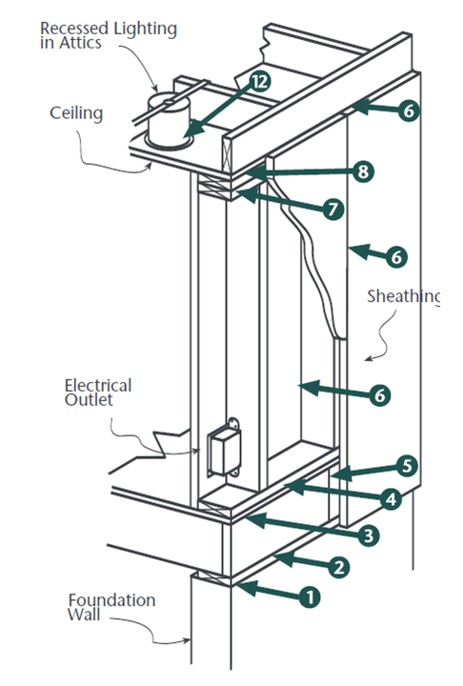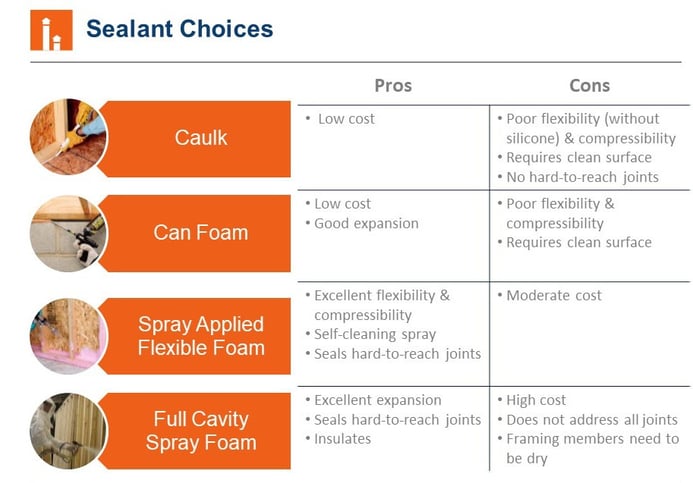Getting high performance walls relies on proper air sealing before installing insulation, regardless of the insulation used. Air sealing is the most critical component of meeting the blower door testing requirement of the Residential International Energy Efficiency Code (IECC) 2012/15. To meet the 3 ACH50 target builders, contractors, and designers must develop an air sealing strategy. This can’t be done without understanding where homes typically leak air to prevent and/or address the top air sealing trouble spots.
Where Air Leakage Occurs
The typical house is leaky enough to exchange all of its air volume with the outside every two hours. [1] Where do those leaks typically occur?[2]
- Sill plate/foundation wall interface
- Sill plate/band joist interface
- Band joist/sub-floor interface
- Bottom plate/sub-floor interface
- Band joist
- Sheathing joist/stud/cavity
- Double top plate interface
- Top plate/ceiling interface
- Windows and doors (not shown)
- Window and door frames/rough opening surface (not shown)
- Electrical/telephone/plumbing/cable intrusions (not shown)
- Recessed lighting in attics

This list doesn’t constitute all the possible air leakage spots, but it does highlight some of the most common ones. A key to addressing these areas is identifying air sealant materials that that are best suited for these specific locations. In general, any air sealing material must:
- Seal against moisture flowing into the wall where it can degrade the structure
- Have a good bond to the material around the hole or gap
- Expand and contract (move) with the building materials that are being sealed
- Continue to perform for the life of the wall
Sealant Options
Insulation contractors can use a combination of air sealing products to address air leakage and these products have their pros and cons, as identified by third-party experts (see chart below). But, as we’ve previously covered in our “Air Sealing Like a Boss” blog post, it’s primarily the people and the practices that will be crucial in building an energy efficient and airtight home.

Getting the Desired Result
Products aside, all the people involved in the construction of a home have a role to play in achieving stringent airtightness targets. Builders, contractors, and/or designers should develop an air sealing strategy beginning with reviewing the building plans and learning about the potential areas of air leakage. Builders should also provide contractors with a checklist of the key air sealing areas and have a quality assurance process to ensure these areas are addressed during insulation installation.
[1] Median sir leakage fo existing homes is 0.5NACH. Residential Energy, Krigger & Dorsi.
[2] Facts About Insulation and Air Infiltration, NAIMA Pub No. BI480





